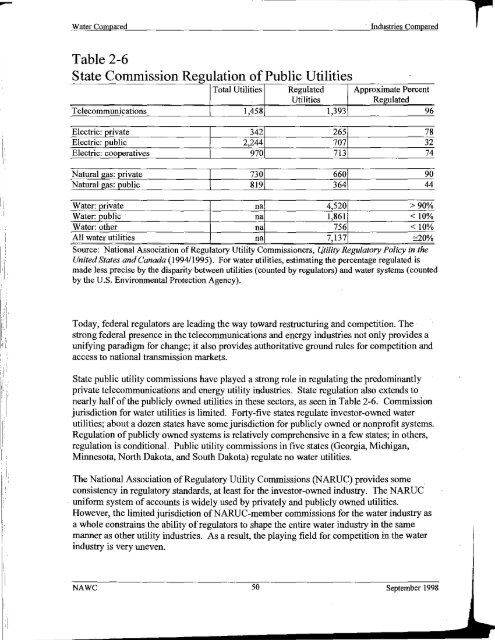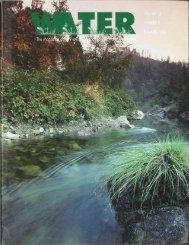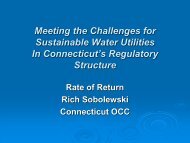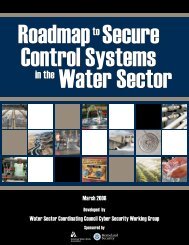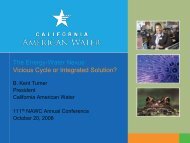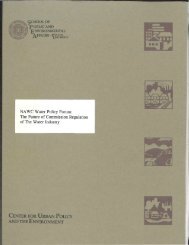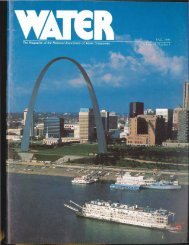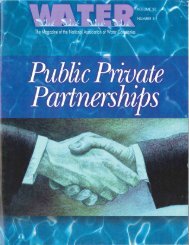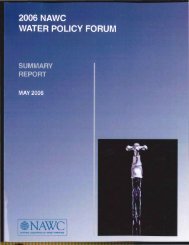BEECHER - NAWC
BEECHER - NAWC
BEECHER - NAWC
Create successful ePaper yourself
Turn your PDF publications into a flip-book with our unique Google optimized e-Paper software.
Water Compared· Industries ComparedrTable 2-6State Commission Regulation of Public UtilitiesTotal Utilities Regulated Approximate PercentUtilitiesRegulatedTelecommunications I ,458 1,393 96Electric: private 342 265 78Electric: public 2,244 707 32Electric: cooperatives 970 713 74Natural 730 660 90Natural 819 364 44IWater: private na 4,520 >90%Water: public · na 1,861 < 10%Water: otherna756 < 10%.All water utilities na 7,137 ~20%.. . .Source: NatiOnal AssociatiOn of Regulatory UtJhty CommJsswners, [/tzllty Regulatory Palzcy m theUnited States and Canada (1994/1995). For water utilities, estimating the percentage regulated ismade less precise by the disparity between utilities (counted by regulators) and water systems (countedby the U.S. Environmental Protection Agency).Today, federal regulators are leading the way toward restructuring and competition. Thestrong federal presence in the telecommunications and energy industries not only provides aunifYing paradigm for change; it also provides authoritative ground rules for competition andaccess to national transmission markets.State public utility commissions have played a strong role in regulating the predominantlyprivate telecommunications and energy utility industries. State regulation also extends tonearly half of the publicly owned utilities in these sectors, as seen in Table 2-6. Commissionjurisdiction for water utilities is limited. Forty-five states regulate investor-owned waterutilities; about a dozen states have some jurisdiction for publicly owned or nonprofit systems.Regulation of publicly owned systems is relatively comprehensive in a few states; in others,regulation is conditional. Public utility commissions in five states (Georgia, Michigan,Minnesota, North Dakota, and South Dakota) regulate no water utilities.The National Association of Regulatory Utility Commissions (NARUC) provides someconsistency in regulatory standards, at least for the investor-owned industry. The NARUC· uniform system of accounts is widely used by privately and publicly owned utilities.However, the limited jurisdiction ofNARUC-member commissions for the water industry asa whole constrains the ability of regulators to shape the entire water industry in the samemanner as other utility industries. As a result, the playing field for competition in the waterindustry is very uneven.<strong>NAWC</strong> 50 September 1998I


